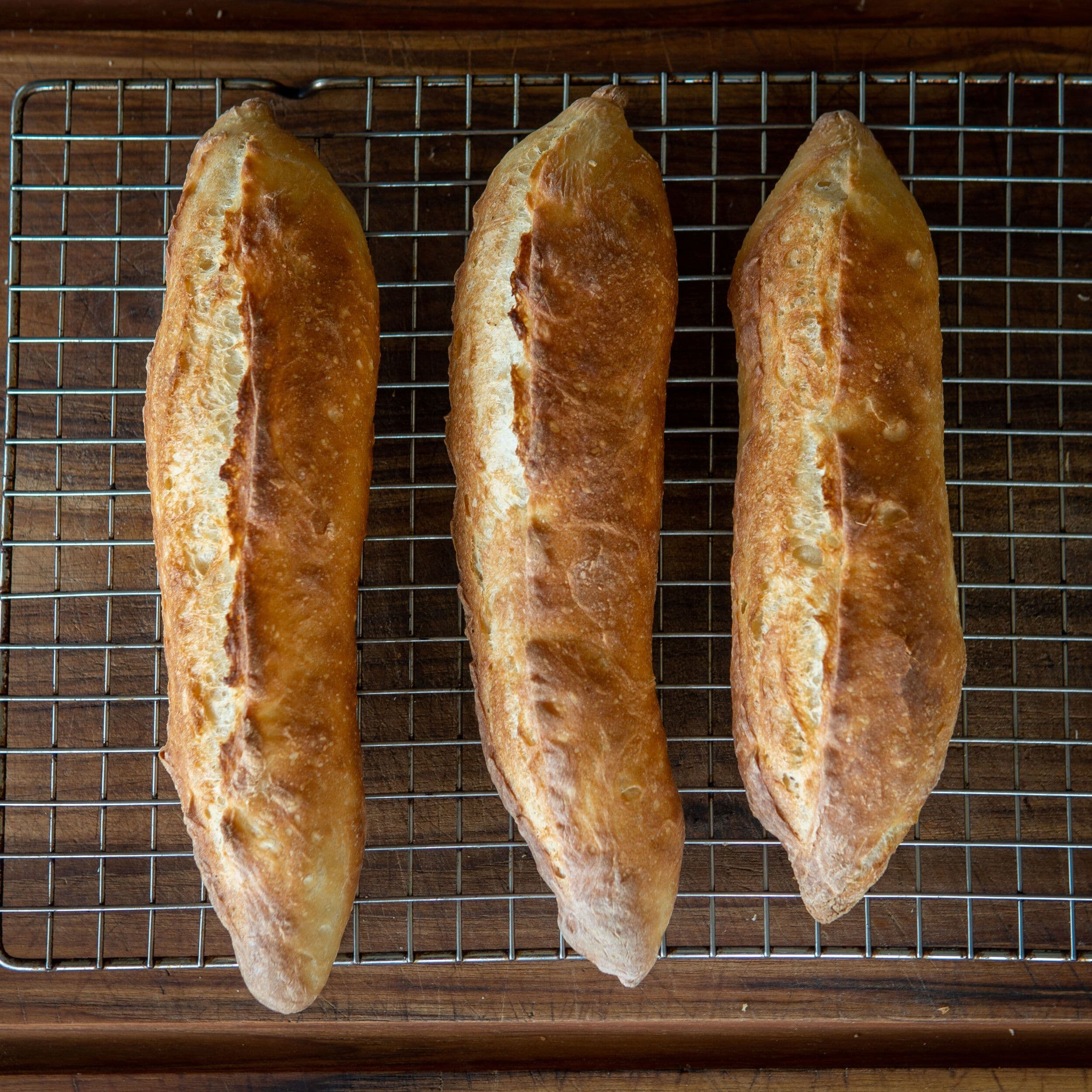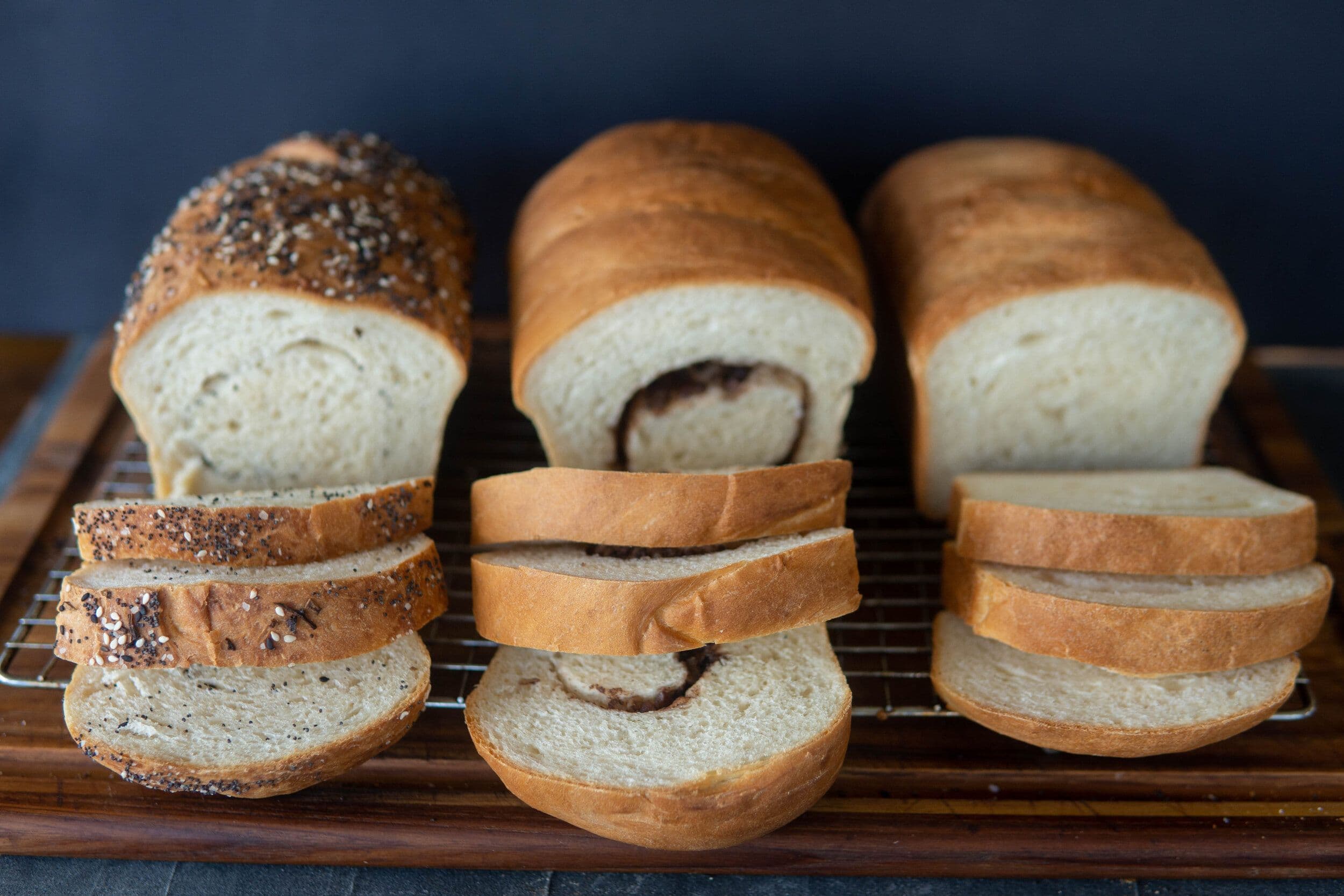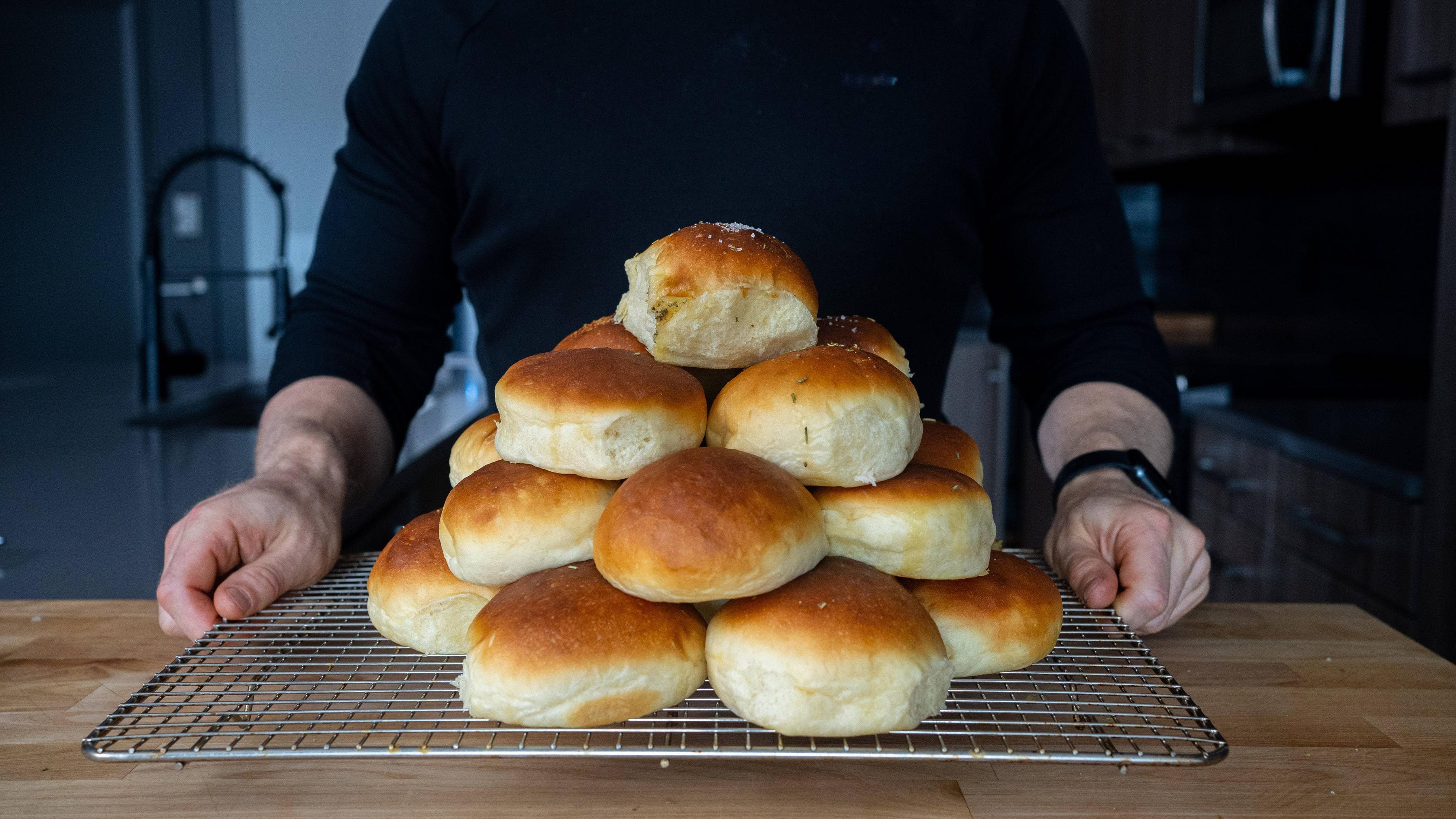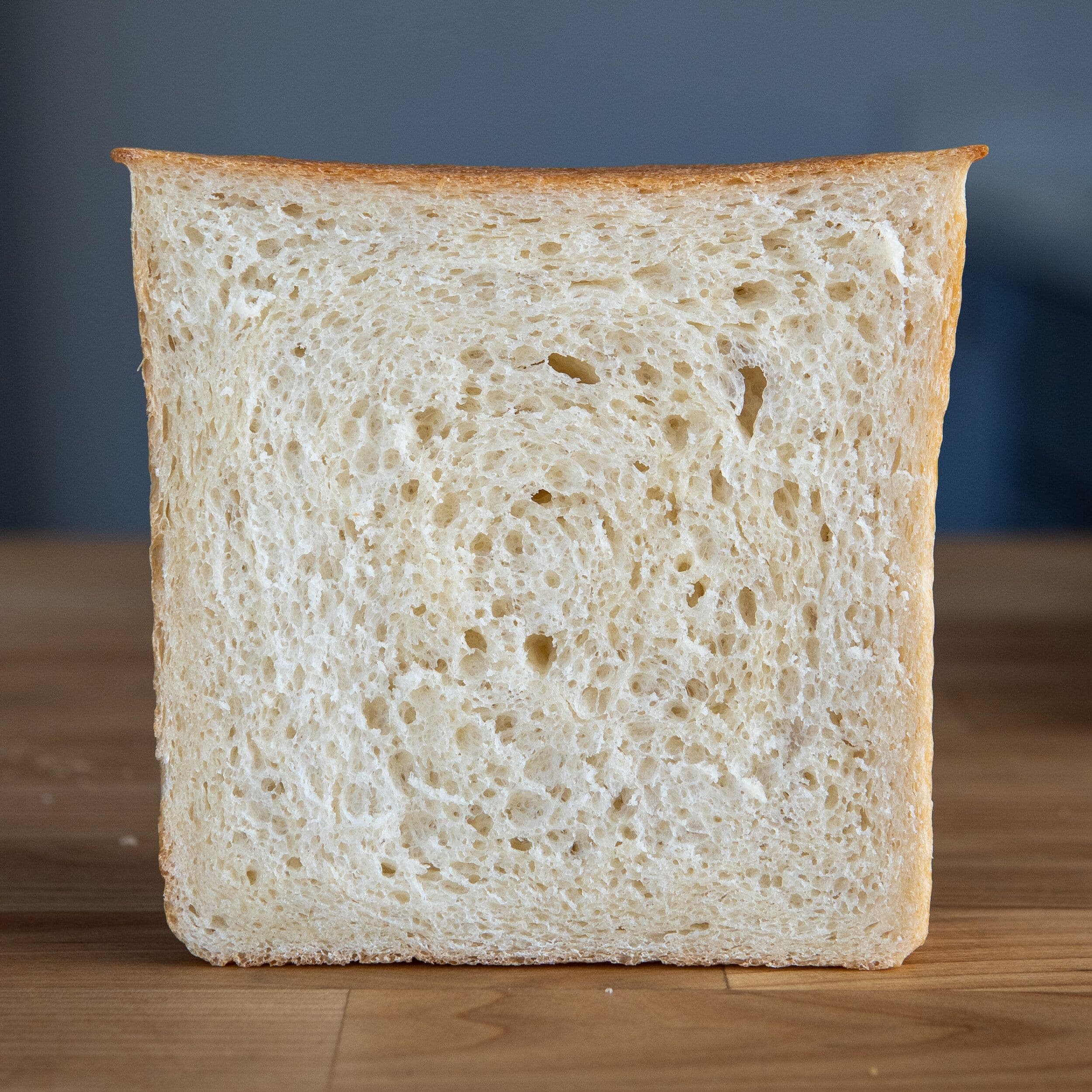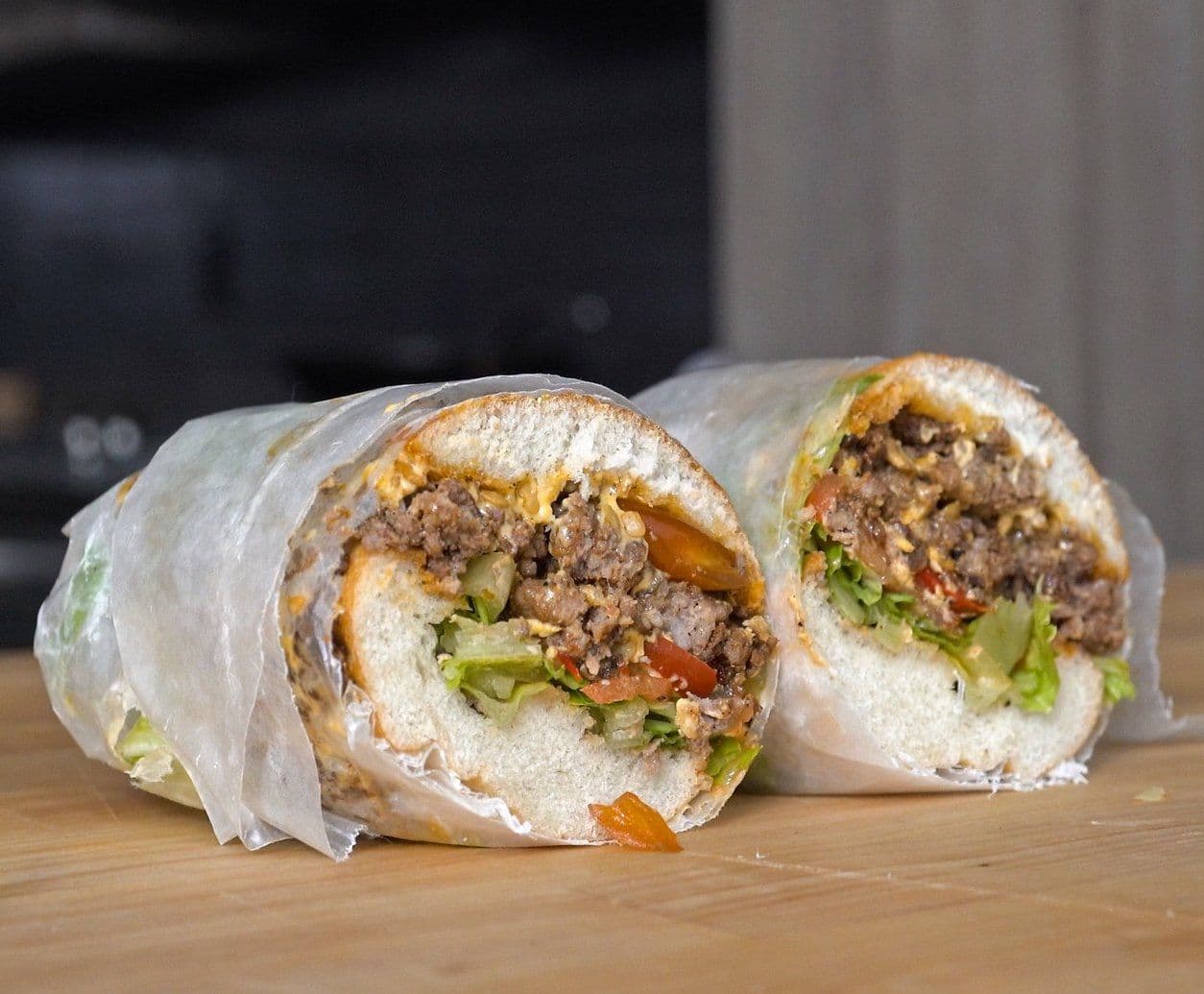Sandwich Baguettes
Flour, water, salt, yeast. That’s all you need for one of the best vehicles for food.
 By Ethan Chlebowski
By Ethan ChlebowskiThis is a 75% hydration dough recipe. This stickier dough can be difficult to work with if you're a beginner.

Ethan Chlebowski
Ingredients
Baguette dough
- instant yeast5 g
- water, warm, around 105-115°F375 g
- bread flour, or all-purpose500 g
- salt10 g
For shaping & baking
- baking spray
- parchment paper
- water, ideally in a spritz bottle
Method
Step 1: Mix the dough
Add the yeast to the warm water along with a spoonful of the flour. Stir until dissolved. Let stand for 5 minutes until light foam surfaces and little bubbles are visible.
- Note: Proofing is done to test the viability of the yeast. If there is no foam surface or little bubbles the yeast is likely dead and should be discarded for new yeast.
Meanwhile, add the flour, and salt to a large mixing bowl. Once the yeast is proofed, pour in the mixture and vigorously mix the dough with your hands until no dry flour remains in the bowl and a cohesive mass forms, about 2 minutes. The dough will be very sticky. Cover with plastic wrap and let rest for 15 minutes.
- Note: Resting will allow the flour to start hydrating all on its own, and make the dough a little bit easier to work with when we start stretching and folding
Step 2: Bulk ferment (1st ferment) + stretch & folds
Once rested, perform a stretch-and-fold by grabbing a corner of the dough in the bowl, lift straight up to stretch the dough as high as it will go without tearing, and fold over to the other side. Rotate the bowl and perform three more reps of stretch and folds. Once folded, turn the dough over onto itself, cover, and let rest for another 25-30 minutes.
- This is one set of stretch-and-folds, perform 3 more sets with 25-30 minutes rest in between.
For each stretch and fold set, the dough should feel more elastic and stretch further without tearing with some air bubbles present
- Note: The stretch and fold method is better suited than for a high-hydration dough such as this because the dough is naturally sticky and this method reduces hand contact. Additionally, the stretch and fold will allow for an open crumb when baked because the air isn’t pushed out of the dough.
After the final set of stretch-and-folds, test for gluten development by stretching up the dough very thin to see if it is slightly translucent before tearing.
- Note: The is the key to understanding if the flour has been hydrated enough. If the dough tears before getting to a slightly translucent window, let rest for another 25 minutes and perform another set of stretch and folds.
Step 3: Divide dough + shape baguettes + proof (2nd ferment)
After the last stretch and fold, sprinkle some flour on the work surface. Using a bench scraper, divide the dough into 6 equal portions (roughly 145-150 grams each). Cover the dough pieces with a clean towel and let rest for 15 minutes.
Once rested, spritz some baking spray on your hands, the work surface, and the piece of dough.
Shaping instructions: Using your fingertips lightly press and stretch a piece of dough into a rectangle about 6 inches wide. Fold the top edge of the dough down to the center, pressing lightly to tighten the dough and form an edge. Fold the dough in half to form a seam at the bottom of the dough. Using the heel of your hand, lightly press to seal the dough seam.
Now you should have a log of dough, and seal side down. Applying even pressure with the palm of your hands in the center of the dough begin gently rolling the log out into a cylinder, about 7 inches long.
Now place a hand on each end of the dough with harder pressure and roll the dough in the opposite direction with each to create a tapered baguette with a twist.
- Note: For a visual shaping guide, look at the video.
Shape each baguette and place on a baking sheet-sized piece of parchment paper. 2 pieces of parchment paper, 3 baguettes on each. Cover with a towel and let it proof until about 1.5 times in size, about 45-60 minutes.
Step 4: Oven set up
With 15 minutes of proofing left, preheat the oven to 450°F/232°C on the convection setting or 475°F/246°C on a standard setting.
Fill a 13x9 inch baking pan halfway with water and place on the bottom rack of the oven. Place a metal baking sheet on the middle rack.
- Note: The pan of water will help create a steamy environment for a crisper crust and the baking sheet will be preheated so the baguettes can be slid on with the parchment paper and immediately start baking for faster oven spring.
Step 5: Score & bake
Using a razor or really sharp knife, score the proofed baguette with one long slash at a 45-degree angle to allow for oven spring.
Pull the preheated baking sheet out of the oven and slide the parchment paper with the baguettes onto it. Place the baguettes on the middle rack and spritz them with a spray bottle of water (or lightly brush with water).
for 5 minutes, rotate the pan, then spritz the baguettes one more time. Continue baking for another 12-15 minutes until the crust is golden and crispy, and the bread sounds hollow when thumped.
Let cool completely on a wire rack before slicing.
FAQ
Also Appears In

Free Spice Guide
Join The Mouthful Newsletter to receive our essential spices list pdf.
Just subscribe to our weekly newsletter where 60,000+ readers get lifestyle protocols, recipe frameworks, Q&A from expert home cooks, and cooking trends explained.
We hate spam too. Unsubscribe anytime.

